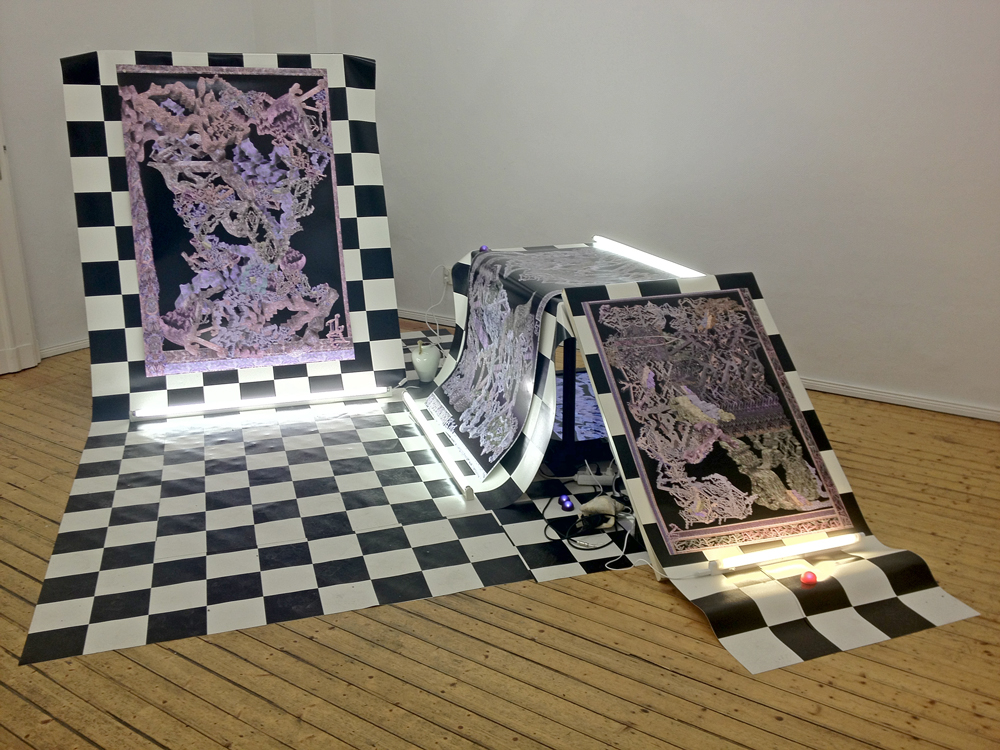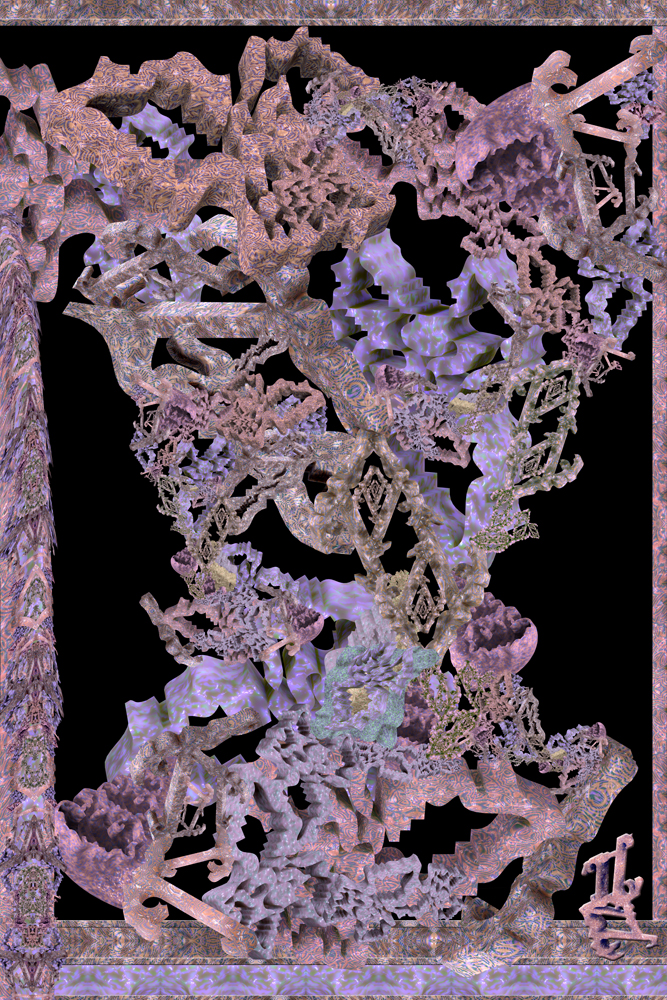
Installation view, <~self~nesting~sensr~> 2012, courtesy the Future Gallery.
<~self~nesting~sensr~>, the current show at The Future Gallery, brings into real time the digitally manipulated, illusory world of Portland-based artist Brenna Murphy. Murphy’s mound of fake mushrooms, cheap lights and checkerboard flooring rolls outward from the center of the exhibition space, with her digital prints radiating like baroque holograms; alluding to the “hyper-real.”
The textures in these pieces are painterly and otherworldly, so I was surprised to learn that Murphy begins her process of image-collecting by taking nature-walks. Then she filters these surfaces/moments through different programs until they become a puzzling system of marbleized forms and mandalas. Presented with altar-like reclining florescent lights, they exude mysticism in keeping with Murphy’s vision of her work as a complex “ecosystem.” Murphy literally references the works’ history with her checkerboard flooring, which resembles the neutralizing backgrounds of image-editing programs like Photoshop and Indesign.

<~self~nesting~sensr~> 2012, courtesy the Future Gallery.
Murphy hesitates to present her digital prints discretely, instead linking objects and channeling the energetic connectivity of her many processes. She sees her performance, digital work, videos, and installations as “intertwined,” claiming, “Each mode of working has a special structure to it that resonates my mind with its unique frequency.”
Walking around her compact installation, one can find a few charged tokens: an obscured video and mirror, cacti and a shell that plays music. All her found objects reference a kind of manufactured natural kitsch, a dollar-store contrast to her dense and rich digital environments. There is, in this contrast, a Utopian insistence on forging a new nature with created forms rather than inherited icons.
I talked briefly to Mike Ruiz, who, along with Anne Betting, started the Future Gallery in 2008, about issues of presentation and new media. He told me that Murphy is among a growing number of net-artists (like Oliver Laric and Timur Si-Qin to name a couple) that are creating sculptural responses derived from the digital realm, blurring ideas of factual and physical space as well as authorship and artistry.
According to Ruiz, a shift in thinking about materiality is a necessary step between code writing in the basement and becoming a viable gallery artist. Ruiz also reinforces the idea that having a physical space for virtual work forces viewers to take it seriously. He hopes that the Future Gallery, in its latest white-walled iteration in West Berlin, can address the rapidly shifting demands of showing new media art like Murphy’s, which is firmly rooted in both the physical and the virtual.




Pingback: MSHR - SPACE Gallery: ARTS, ARTISTS and IDEAS